In our last post Installing vShield Manager we learnt what vShield Manager is and how to deploy it. This post will cover the steps needed for configuring the vShield appliance for first use. So let’s start.
Powering-on the vShield Manager VM will give you following console. Unfortunately there is no other way around than configuring it directly from the console for the first time.
Login with the “admin” user and password which you set during deploying the appliance. Sometime you will get an error that “system startup is not complete. Please logout and log back in after a few minutes”
Wait for a few minutes and then try login. Let all the services come up in the vShield VM and then login.
After successful login you will get Manager > prompt. Type enable here to start begin configuring the appliance. It will ask you for a password. Supply the same password which you have given at the time of deploying the appliance.
You can see the prompt has been changed to Manager # now. Type setup command and hit enter.
It will ask you the following details to enter:
IP Address
NetMask
Gateway
Primary DNS
Secondary DNS
Search Domain
After entering the values in above field type “Y” to save the configuration.
Once you are done with setting the IP address and other related values it’s a good idea to test connectivity of vShield with other components of your infrastructure. I checked ping connectivity as well as DNS resolution in my lab.
Once the network connectivity is verified, its time to do the real configuration.
Launch a web-browser of your choice and enter https://vshield_manager_ip
Login to appliance using “admin” user and password set during deployment.
A successful login will present you with below page. There are several options which you can choose to configure here.
You can start with registering the vShield Manager with Lookup service. Select the edit button in the lookup Service section.
Enter the following details:
Lookup Service Host: The host where lookup service is running. In my case it is running on same host where my vCenter Server is running
Port Number: Don’t change this unless and until you are using some other port for your lookup service
SSO Administrator Username: This is typically administrator@vsphere.local
Password: SSO password set during sso installation.
Once you enter all the values and hit OK you will be presented with a SSL certificate. Click yes to accept the certificate
Once the lookup service is successfully contacted and registered the screen will appear like as shown below.
Next is to link vShield Manager to your vCenter Server.
Select the edit button in vCenter Server section and enter the following details:
vCenter Server: Hostname or IP of your VC
Administrator Username: Use the domainusername format to supply this info
Password: Password for above user
Important: Don’t forget to select “Assign vShield Enterprise Admin role to this user” checkbox.
Once all the details have been filled up hit ok. It will again present you a SSL certificate. Accept the certificate and install it.
Now you have linked vShield Manager to Lookup service as well as your vCenter Server. Its time to configure the vCloud director now. We will be doing this in our next post.

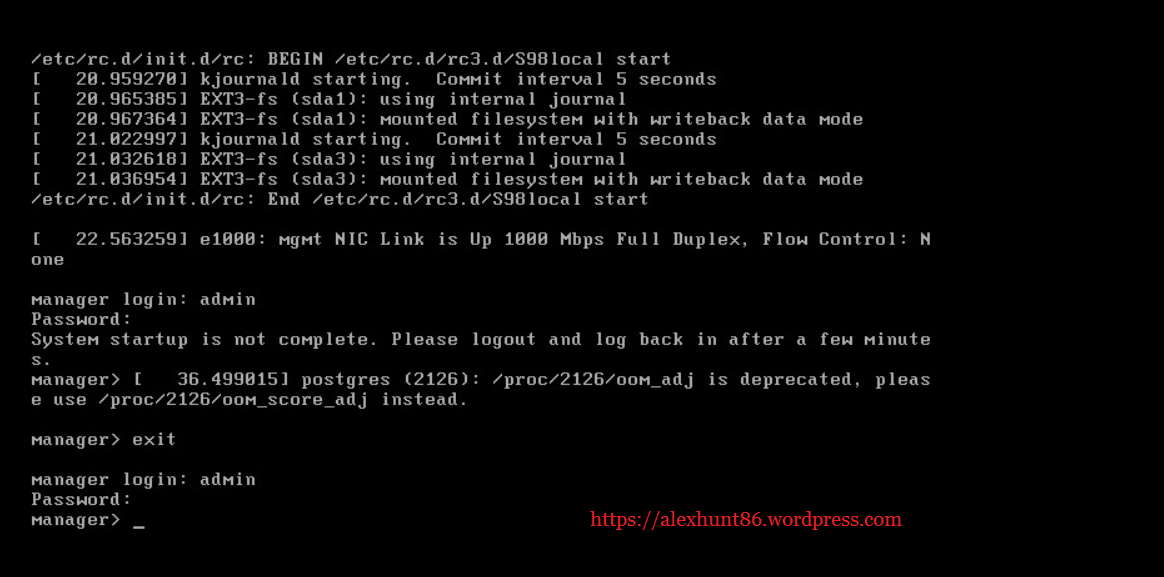
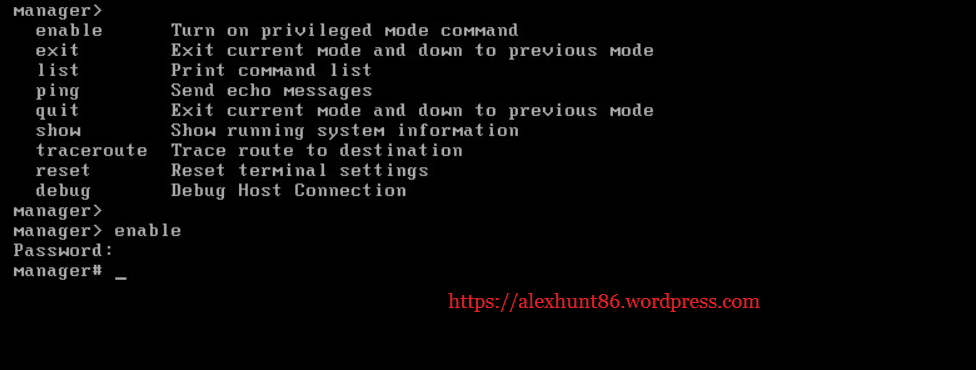
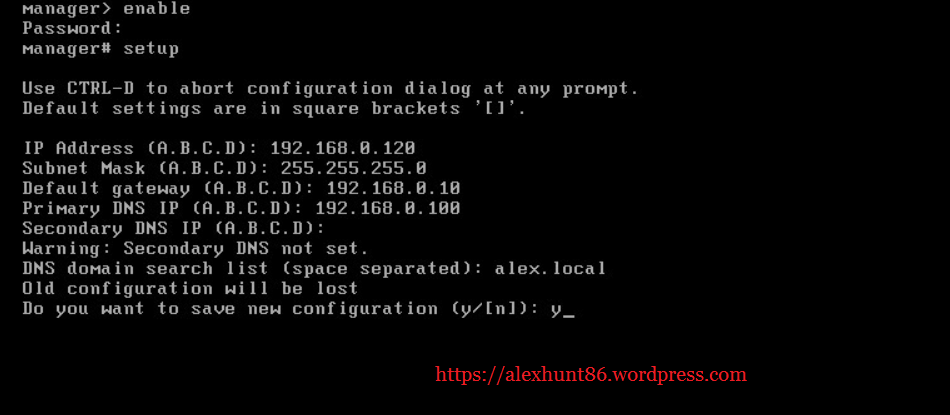
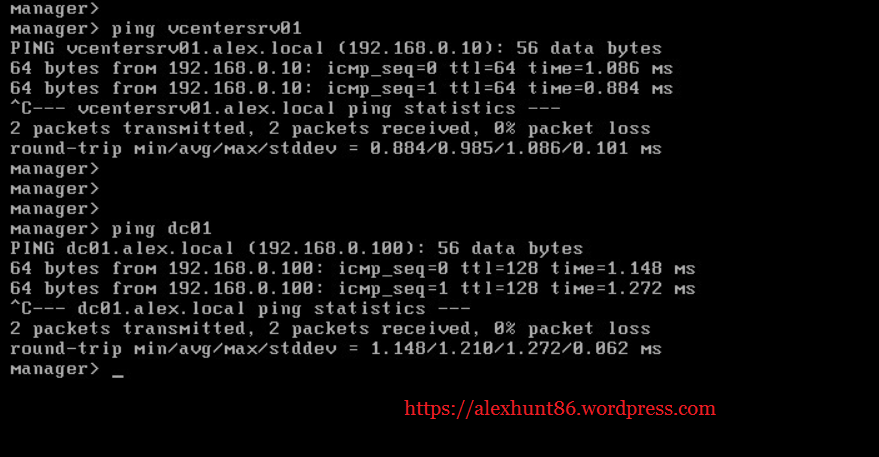
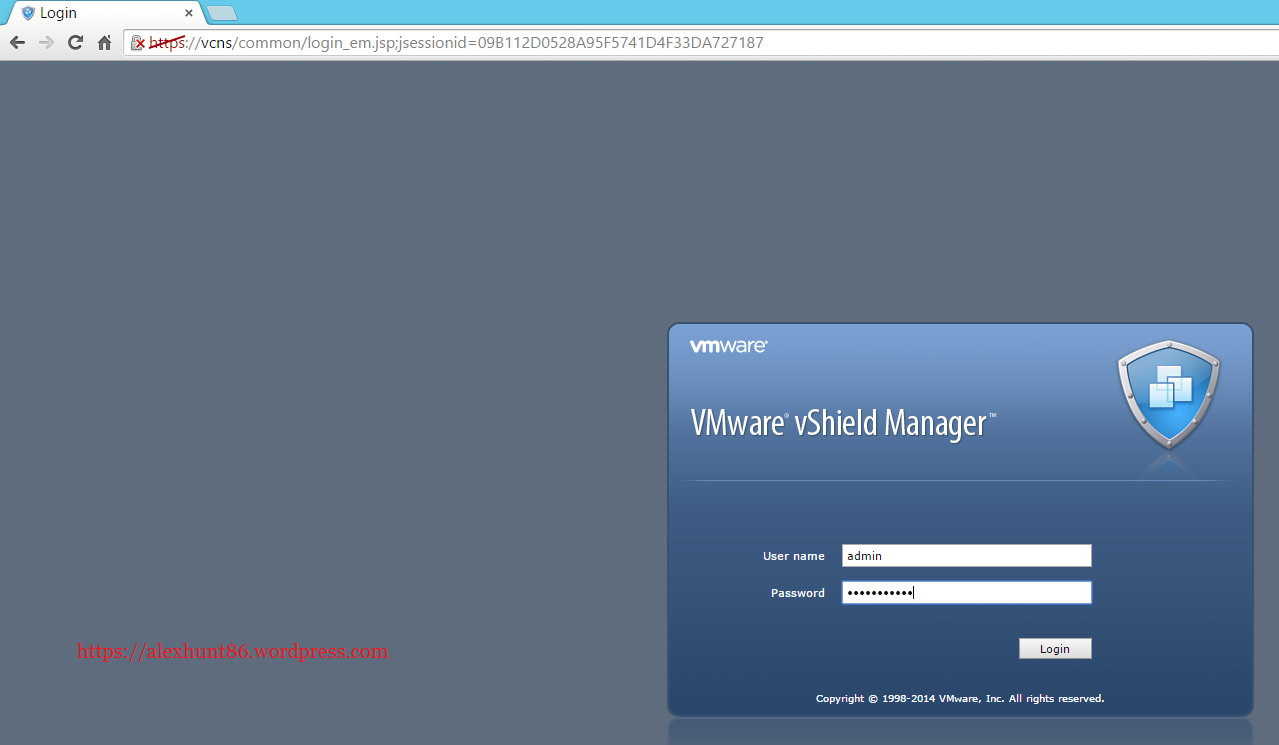
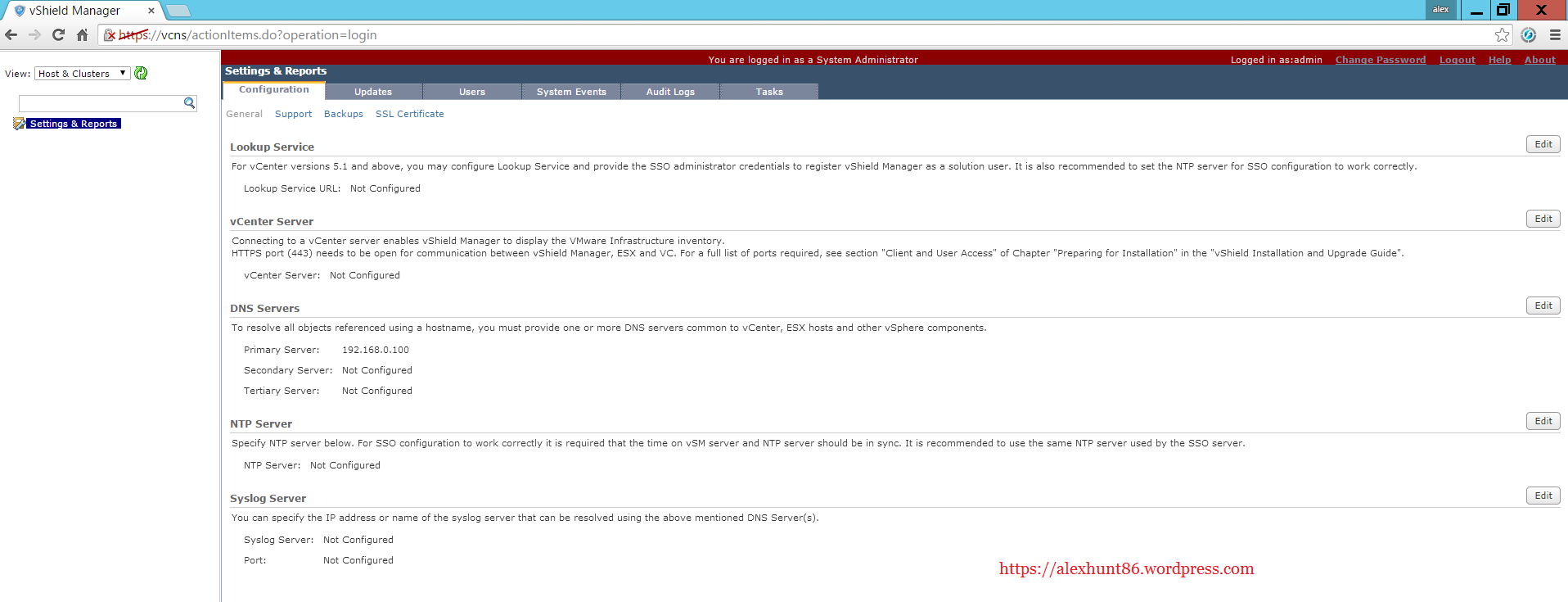

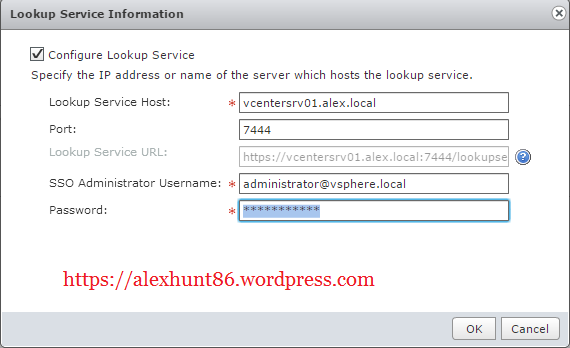
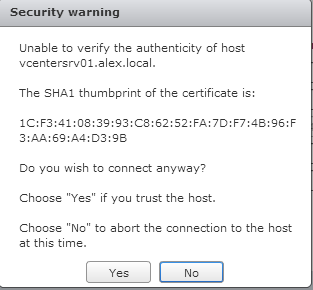
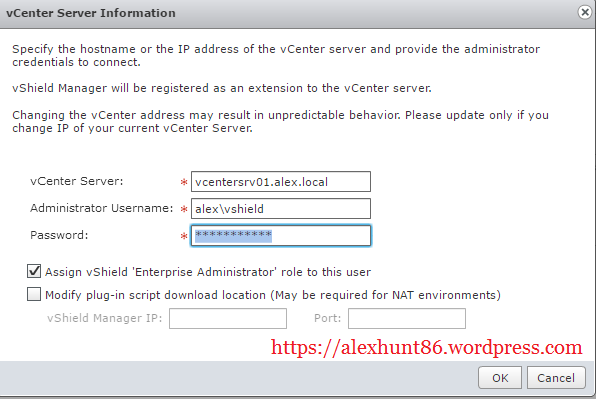
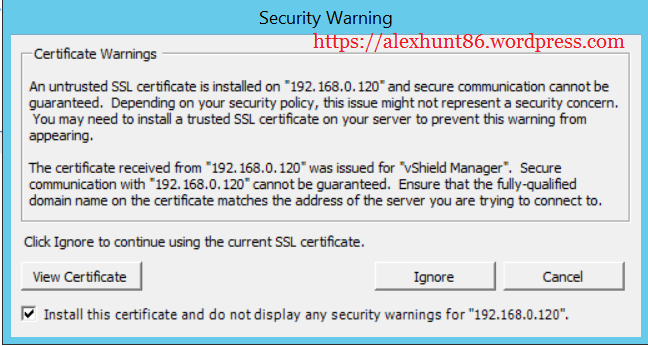
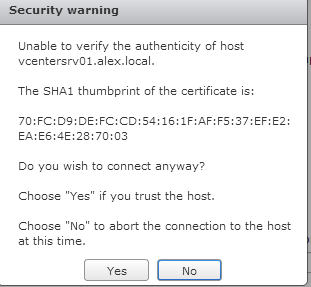
2 thoughts on “Building a Private Cloud with vCloud Director-Part 6: Configuring vShield Manager”